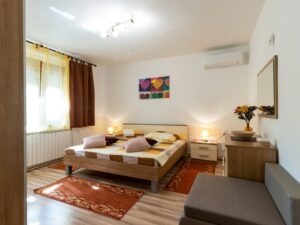I’ve always believed that a home should feel as good as it looks. You know that moment when you step inside after a long day, kick off your shoes, and take a deep breath? That’s when you realize how much the air in your home matters. For years, people thought that carpet flooring was a culprit when it came to indoor air quality—but let me tell you, that old tale doesn’t hold water anymore.
Carpet has come a long way, and in many cases, it’s actually doing more good than harm when it comes to the air we breathe. I like to think of it as the unsung hero under our feet—quietly working behind the scenes to trap dust, pollen, and all those pesky particles that would otherwise be floating around and tickling your nose. It’s not just about style or comfort; it’s about creating an environment where every breath feels a little cleaner.
Of course, there’s no magic wand here—proper maintenance still plays a big role. But once you understand how modern carpets are designed to improve air quality, you’ll see them in a whole new light. It’s like the saying goes: don’t judge a book by its cover—or in this case, a floor by its fibers.
How Carpet Acts as a Natural Air Filter
Now, here’s where the magic happens—right beneath your feet. I often tell homeowners that their carpet is doing more than just cushioning their steps; it’s pulling double duty as a natural air filter. You see, those dense fibers aren’t just for looks—they’re little dust catchers, quietly trapping particles like dirt, pollen, and pet dander that would otherwise be swirling through the air.
Think of it this way: when you walk across a hardwood or tile floor, you can almost see the dust bunnies take flight. But with carpet, those particles get caught and held until you vacuum them up. It’s like having a loyal helper that never takes a day off. This simple action reduces the amount of stuff floating around and makes your indoor air cleaner than you’d imagine.
Modern carpet fibers are engineered to hold on to contaminants without letting them get airborne again—a real “set it and forget it” kind of benefit. In a sense, carpet does the heavy lifting where you least expect it. Of course, regular vacuuming with a HEPA filter is key to keeping things in check, but the science is solid: carpets can reduce airborne dust by trapping it before it ever reaches your lungs.
So, the next time someone tells you carpet’s bad for allergies, you can tell them it’s a bit like blaming the broom for the mess—it’s actually helping clean up the air, not making it worse.
Carpet vs. Hard Flooring – The Air Quality Face-Off
Now, let’s call a spade a spade—hard floors look sleek and modern, but when it comes to air quality, they don’t always win the race. I’ve seen this play out countless times: homeowners pull up their old carpet thinking they’re saying goodbye to dust and allergies, only to discover that their new wood or tile floor sends those same particles dancing through the air with every step.
Here’s the kicker—on hard surfaces, dust and allergens don’t have anywhere to hide. They sit on top, waiting for the slightest breeze or footstep to send them airborne. It’s like playing whack-a-mole—you clean one spot, and the dust pops up somewhere else. On the other hand, carpet acts as a silent partner, trapping those pesky particles deep within its fibers until you vacuum them away. It’s not just a matter of looks; it’s about what’s floating around your living room when you’re trying to breathe easy.
Studies from groups like the Carpet and Rug Institute (CRI) have shown that rooms with properly maintained carpet actually have lower levels of airborne dust compared to rooms with hard floors. Surprising, right? It’s a classic case of “don’t judge a book by its cover.”
Of course, this doesn’t mean you should toss out your hardwood floors tomorrow. Every flooring type has its pros and cons. But if cleaner indoor air is high on your priority list, carpet flooring certainly gives hard floors a run for their money. After all, when the dust settles—literally—carpet tends to keep it there until you’re ready to sweep it away for good.
Low-VOC and Eco-Friendly Carpets – Breathing Cleaner from Day One
If you’ve ever walked into a freshly renovated room and caught that “new carpet smell,” you might’ve wondered what exactly you’re breathing in. Years ago, that smell often came from VOCs (Volatile Organic Compounds)—chemicals that could linger in the air and irritate sensitive noses. But times have changed, and so have carpets. These days, many manufacturers are going the extra mile to make sure your first breath after installation is clean, not chemical.
Modern carpets, pads, and adhesives are now made with low-VOC or zero-VOC materials, meaning they release little to no harmful emissions. Brands certified by programs like Green Label Plus or CRI (Carpet and Rug Institute) have to meet strict air-quality standards. I like to say it’s “a breath of fresh air—literally.” You’re not just getting a soft surface underfoot—you’re getting peace of mind knowing that your home’s air stays as pure as possible from day one.
Eco-friendly carpet options also bring another feather to their cap: sustainability. Many are made from recycled fibers or natural materials like wool, which don’t just reduce your carbon footprint but also minimize indoor pollutants. It’s a win-win situation—your home feels cozier, the air feels lighter, and the planet thanks you for making the right call.
So, if you’re considering new flooring, it pays to look beyond the color swatches and pile height. Choosing a certified low-VOC carpet is like choosing to start your home’s air quality journey on the right foot. After all, why just walk on comfort when you can breathe it in, too?
Maintenance – Keeping Your Carpet a Healthy Air Partner
Now, here’s the part where the rubber meets the road—or should I say, where the vacuum meets the carpet. Even the best air-filtering carpet needs a little TLC to stay on top of its game. I always tell homeowners: your carpet’s doing you a favor by trapping dust and allergens, so the least you can do is return the favor with a bit of regular care.
First things first—vacuuming. And not just any vacuuming—use a HEPA filter vacuum to catch those microscopic particles that love to play hide-and-seek deep in the fibers. I usually recommend giving your carpet a once-over at least twice a week in high-traffic areas. It’s a simple habit that keeps the air fresher and prevents dust from building up. As the saying goes, a stitch in time saves nine—and that couldn’t be truer when it comes to carpet care.
Every few months, a deep steam clean works wonders. It lifts dirt, kills bacteria, and gives your carpet a clean slate—literally. Make sure to let it dry completely afterward to prevent any sneaky mold or mildew. Trust me, moisture is the one thing you don’t want lingering around.
Another underrated tip? Keep your indoor humidity between 30–50%. Too dry, and you’ll kick up static and dust; too damp, and you risk mold growth. A small dehumidifier or air purifier can be your best ally here.
And don’t forget prevention—it’s half the battle. A no-shoes policy, doormats at every entrance, and quick cleanups for spills all go a long way. It’s like keeping the front door closed when there’s a storm—you’re just saving yourself from a bigger mess later.
Choosing the Right Carpet for Allergy Sufferers
When it comes to allergies, choosing the right carpet is half the battle won. I’ve seen many folks throw the baby out with the bathwater—blaming carpet for their sniffles when, in reality, the problem often lies in the type of carpet they chose. Not all carpets are created equal, and if you’ve got sensitive sinuses, you’ll want to be picky about what’s under your feet.
First off, go for low-pile carpets. The shorter the fibers, the less room dust, pollen, and pet dander have to hide. Think of it like trimming a hedge—keep it neat and tight, and it’s easier to manage. Low-pile or loop-style carpets like Berber are great options because they don’t trap as many allergens as plush or shag styles.
When it comes to material, synthetic fibers like nylon or triexta are your best friends. They resist mold, mildew, and dust mites far better than older carpet types. If you’re a fan of natural fibers, wool is a solid choice—it’s naturally hypoallergenic and repels dirt thanks to the lanolin coating on its fibers. Just remember, wool needs a bit more upkeep, but as the saying goes, you get what you pay for.
Also, look for carpets labeled “Green Label Plus” or low-VOC certified. These not only help keep the air cleaner but also minimize off-gassing—something allergy sufferers will notice right away. Pair that with a non-toxic carpet pad and low-VOC adhesive, and you’ll be breathing easy in no time.
And here’s the cherry on top: regular maintenance. Even the most allergy-friendly carpet can turn into a dust magnet if you let it go. Vacuum regularly with a HEPA filter, and schedule deep cleaning every 6–12 months. It’s like keeping your car tuned—skip it, and the performance drops.
At the end of the day, the devil’s in the details. The right combination of pile height, material, and maintenance can turn your carpet from a potential trigger into an air-quality ally. After all, why suffer for style when you can have both beauty and breathability?
Final Thoughts – Breathing Easy, Living Better
At the end of the day, I’ve learned that good air starts from the ground up—quite literally. Carpet flooring often gets a bad rap, but once you peel back the layers (pun intended), you realize it’s not the villain it’s made out to be. In fact, when chosen wisely and maintained properly, it’s one of the unsung heroes of a healthy home.
Carpet doesn’t just make a room feel cozy—it quietly works behind the scenes, trapping dust and allergens, reducing airborne particles, and helping you breathe a little easier. Add in today’s low-VOC and eco-friendly options, and you’ve got a flooring solution that’s as kind to your lungs as it is to your feet. It’s like they say, you can’t judge a book by its cover—and you certainly shouldn’t judge a carpet by old myths.
From personal experience, I’ve found that a clean, well-kept carpet brings not just warmth and comfort but also a noticeable freshness to the air. It’s like stepping into a new chapter of home living—one where comfort and health go hand in hand. With the right maintenance routine and the right carpet choice, you’ll be breathing easier and living better before you know it.





